Related Research Articles

Poul William Anderson was an American science fiction author from the 1940s until the 21st century. Anderson wrote fantasy novels, historical novels, and short stories. His awards include seven Hugo Awards and three Nebula Awards.

Eric Frank Russell was a British author best known for his science fiction novels and short stories. Much of his work was first published in the United States, in John W. Campbell's Astounding Science Fiction and other pulp magazines. Russell also wrote horror fiction for Weird Tales and non-fiction articles on Fortean topics. Up to 1955 several of his stories were published under pseudonyms, at least Duncan H. Munro and Niall(e) Wilde.
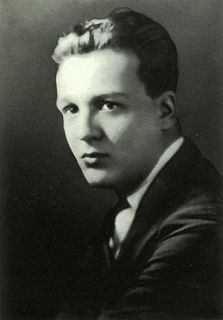
Stanley Grauman Weinbaum was an American science fiction writer. His first story, "A Martian Odyssey", was published to great acclaim in July 1934; the alien Tweel was arguably the first character to satisfy John W. Campbell's challenge: "Write me a creature who thinks as well as a man, or better than a man, but not like a man." Weinbaum wrote more short stories and a few novels, but died from lung cancer less than a year and a half later.

Alan Edward Nourse was an American science fiction writer and physician. He wrote both juvenile and adult science fiction, as well as nonfiction works about medicine and science. His SF works sometimes focused on medicine and/or psionics.
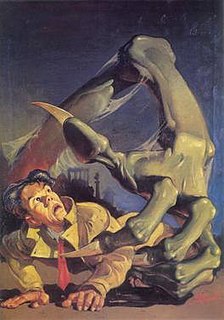
Edward Daniel Cartier, known professionally as Edd Cartier, was an American pulp magazine illustrator who specialized in science fiction and fantasy art.

Ray Cummings was an American author of science fiction literature and comic books.
Thomas L. Sherred was an American science fiction writer.
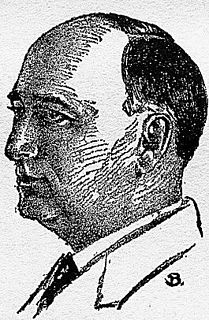
David Henry Keller was an American writer who worked for pulp magazines in the mid-twentieth century, in the science fiction, fantasy and horror genres. Considered to be "one of the most conceptually sophisticated" science fiction writers of his time, he was the first psychiatrist to write for the genre, and was most often published as David H. Keller, MD. He was also known by the pseudonyms Monk Smith, Matthew Smith, Amy Worth, Henry Cecil, Cecilia Henry, and Jacobus Hubelaire.

F. L. Wallace, sometimes credited as Floyd Wallace, was a noted science fiction and mystery writer. He was born in Rock Island, Illinois, in 1915, and died in Tustin, California, in 2004. Wallace spent most of his life in California as a writer and mechanical engineer after attending the University of Iowa. He also attended UCLA.
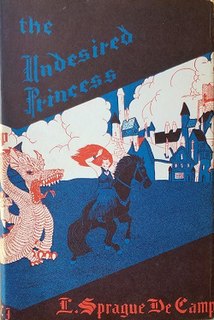
The Undesired Princess is a 51,000 word fantasy novella by American writer L. Sprague de Camp. It was first published in the fantasy magazine Unknown Worlds for February 1942. It was published in book form by Fantasy Publishing Company, Inc. in 1951. The book version also includes the 10,000 word fantasy short story "Mr. Arson", first published in Unknown for December 1941. The book was bound together with Stanley G. Weinbaum's The Dark Other in the omnibus collection Fantasy Twin by the same publisher in 1953. The title story was also published in paperback by Baen Books in 1990 together with David Drake's story The Enchanted Bunny, under the combined title The Undesired Princess & the Enchanted Bunny.
Harry Chandler Elliott was a naturalized American physician and writer of science fiction.

The Philosophical Corps is science fiction novel by American writer Everett B. Cole. It was published in 1962 by Gnome Press in an edition of 4,000 copies. The novel is a fix-up of stories that originally appeared in the magazine Astounding SF.

Arthur Leo Zagat (1896–1949) was an American lawyer and writer of pulp fiction and science fiction. Trained in the law, he gave it up to write professionally. Zagat is noted for his collaborations with fellow lawyer Nat Schachner. During the last two decades of his life, Zagat wrote short stories prolifically. About 500 pieces appeared in a variety of pulp magazines, including Thrilling Wonder Stories, Argosy, Dime Mystery Magazine, Horror Stories, Operator No. 5 and Astounding. Zagat also wrote the "Doc Turner" stories that regularly appeared in The Spider pulp magazine throughout the 1930s and the "Red Finger" series that ran in Operator #5, and wrote for Spicy Mystery Stories as "Morgan LaFay". A novel, Seven Out of Time, was published by Fantasy Press in 1949, the year he died. His more well known series is probably the Tomorrow series of 6 novelettes from Argosy collecting into 2 volumes by Altus Press in 2014.
Howard Elmer Wandrei was a United States artist and writer. He wrote over 200 stories that appeared in the magazines Weird Tales, Astounding, Esquire, Black Mask and others. Wandrei wrote under his own name and as by Robert Coley and H.W. Guernsey.
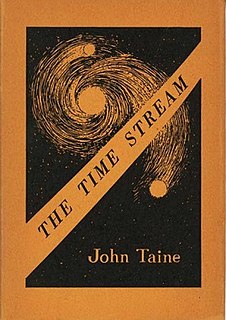
The Time Stream is a science fiction novel by American writer John Taine. The novel was originally serialized in four parts in the magazine Wonder Stories beginning in December 1931. It was first published in book form in 1946 by The Buffalo Book Company in an edition of 2,000 copies of which only 500 were ever bound. It is the first novel to see time as a flowing stream.

The Mightiest Machine is a science fiction novel by American writer John W. Campbell, Jr. The novel was originally serialized in 5 parts in Astounding Stories magazine from December 1934 to April 1935, and was published in book form in 1947 by The Hadley Publishing Co. in an edition of 1,200 copies. Campbell was a leading figure in the Golden Age of Science Fiction.
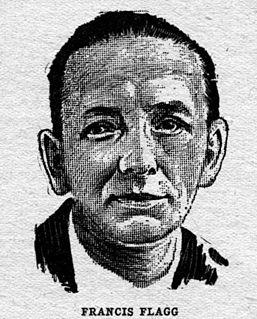
George Henry Weiss (1898–1946) was an American poet, writer and novelist. His science fiction stories and poetry appeared under the pseudonym "Francis Flagg" in the magazines Amazing Stories, Astounding, Tales of Wonder, Weird Tales and others. His novel The Night People was published by Fantasy Publishing Company, Inc. in 1947.

Analog Science Fiction and Fact is an American science fiction magazine published under various titles since 1930. Originally titled Astounding Stories of Super-Science, the first issue was dated January 1930, published by William Clayton, and edited by Harry Bates. Clayton went bankrupt in 1933 and the magazine was sold to Street & Smith. The new editor was F. Orlin Tremaine, who soon made Astounding the leading magazine in the nascent pulp science fiction field, publishing well-regarded stories such as Jack Williamson's Legion of Space and John W. Campbell's "Twilight". At the end of 1937, Campbell took over editorial duties under Tremaine's supervision, and the following year Tremaine was let go, giving Campbell more independence. Over the next few years Campbell published many stories that became classics in the field, including Isaac Asimov's Foundation series, A. E. van Vogt's Slan, and several novels and stories by Robert A. Heinlein. The period beginning with Campbell's editorship is often referred to as the Golden Age of Science Fiction.

Comet was a pulp magazine which published five issues from December 1940 to July 1941. It was edited by F. Orlin Tremaine, who had edited Astounding Stories, one of the leaders of the science fiction magazine field, for several years in the mid-1930s. Tremaine paid one cent per word, which was higher than some of the competing magazines, but the publisher, H-K Publications based in Springfield, MA, was unable to sustain the magazine while it gained circulation, and it was cancelled after less than a year when Tremaine resigned. Comet published fiction by several well-known and popular writers, including E.E. Smith and Robert Moore Williams. The young Isaac Asimov, visiting Tremaine in Comet's offices, was alarmed when Tremaine asserted that anyone who gave stories to competing magazines for no pay should be blacklisted; Asimov promptly insisted that Donald Wollheim, to whom he had given a free story, should make him a token payment so he could say he had been paid.
"Rule 18" is a 1938 science fiction novelette by American writer Clifford D. Simak, credited as launching Simak's career and helping inspire the writing style of Isaac Asimov. It won a Retrospective Hugo Award for Best Novelette in 2014.
References
- Clute, John; Peter Nicholls (1995). The Encyclopedia of Science Fiction . New York: St. Martin's Griffin. p. 242. ISBN 0-312-13486-X.
- Tuck, Donald H. (1974). The Encyclopedia of Science Fiction and Fantasy. Chicago: Advent. p. 107. ISBN 0-911682-20-1.
- "Internet Speculative Fiction Database" . Retrieved 2013-05-13.